What Do All These Acronyms Mean And Why Should I Care About Them?
As we all venture down Cannabis Lane sooner or later the question will come up about a product that we’re using or something we see on social media, “What solvent was used to make this?” First of all, what is a solvent and why are they needed in natural medicine? That’s a very controversial question nowadays with so many different opinions it’s almost like asking who’s the best NFL team. Solvents are used to strip the cannabinoids and other valuable components of the plant. It’s how some of the medicine I use to stop seizures by vaping and also ingesting oil is made but quickly I state “not by preference”. Carefully cleaned or purged of the solvent, a patient like myself feels safe to use the Cannabis Oil or Dabs (Shatter, Wax, etc.). But should we? Lab testing should be obtained on any product a person buys to consume. If you’re going to smoke it I still want labs if at all possible. Why? It’s very dangerous to inhale solvents and in the matter of the cannabis flower or bud – just as dangerous to smoke mold! Back to these extracts, before we dive into what all these initials and types of cannabis are, let’s take a look at how this all happened. Where did oil come from?
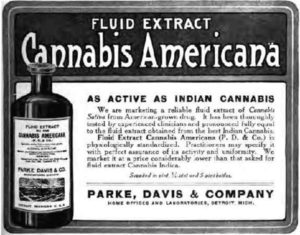
The evolution of cannabis oils is pretty interesting. Extracts from the awesome plant are rumored to have been around in a concentrate since the 1940s. But, that can’t be too accurate as there were concentrates such as Hash that were made long before then. It seems to me that aged extraction methods and technologies aren’t given the credit for being as potent and beneficial as they can be. Maybe there’s something to what was done long ago without solvents and maybe we should try to limit solvent products, maybe not. It’s all personal choice Extraction of cannabinoids is far from novel or new – it’s been done for eons. Current recipes can be very potent orally, vaporized, or in other ways. Cannabis products that are used for various health concerns by millions are created with solvents and safely used. Sometimes not, so we’ll learn a bit about it all and some history.
Sadly, prohibition ended an era in which people didn’t question the plant as some still do now. It’s known that the vaporization of cannabis solids or extracts first occurred in the now declassified MK Ultra program in World War II. A “THC acetate serum” was used by the U.S. Office of Strategic Services in a highly criticized biochemical interrogation program. The guy behind this, George White, tricked prisoners and random people into using hash oil-laced tobacco cigarettes along with LSD preparation.
Once again our government knew that Cannabis had a medicinal value in its ability to allow the prisoners and others to speak casually and without anxiety. MK Ultra continued to run as a highly publicized and scrutinized CIA program, which the White made public knowledge in the ’50s and ’60s. Now, there’s a strain named after it.

A very good strain with a history that isn’t so nice as inevitably the entire project was brought down after the CIA was infiltrated due to suicide deaths. The way the oil was made in this project laid the foundation for cannabis concentrates as we know them today – hash oil. That’s exactly what all of those initials are – different types of hash oil. Now let’s learn a tad more.

That didn’t stop the corrupt 1970 Controlled Substances Act that still exists today to pair cannabis with LSD in schedule one (along with the likes of PCP & Heroin). Before we head back to what these different oils are and what those initials mean let’s all take a look at how corrupt our government can be. In 1906 The United States removed Cannabis and replaced it with Heroin ‘elixir’ from the Pharmacopia.
This is how the two became very remotely related. In the mid 30’s Heroin was ‘banned’ and made illegal, leaving 10’s thousands with no way to gain access to a strong opiate other than to either 1.) Wait for Opiate Pills which weren’t made yet in America or 2.) Buy from the newly created ‘Cartel’ who was bringing Heroin in by the droves, not Cannabis.
So what does our government do? They create the prohibition of Cannabis for multiple reasons – one of the biggest ways that the prohibition of alcohol had ended and what were those evil powers in DC going to do? They needed a job, with tons of Heroin addicts on the streets they decided to add Cannabis users to the same ‘group’ and start up the ‘Reefer Madness’ campaign to continue and eventually explode the conflicts between ethnicities. One huge diversion tactic to take everyone’s minds off of all the innocent victims of multiple wars – nothing different than what we see today. Every time a child seizes to death it’s on our government as long ago they declared Cannabis to be medicine that protects us neurologically but did nothing to stop my seizures or any children. Yes, I’m personally pissed about that. But much more irritated about the fact kids continue to perish due to a government that doesn’t care. Ready to learn about these oils, solvents, and more? Knowledge is power!
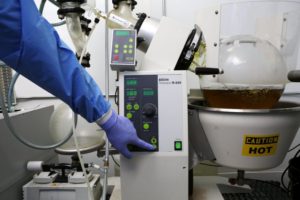
Winterlife Lab in Seattle, Washington
Before Solvents – natural extractions still exist today Although many are making or buying cannabis oils that are made with solvents there’s still that old school crowd, and a lot of others that have found their niche, making cannabis concentrates with natural lipid extractions. What that basically means is the use of a fatty item, whether a good one or one that may not be so well such as butter, to extract the cannabinoids from the plant. I prefer to call this infusion of the plant into whatever natural item is being used such as in this photo. First of all, it’s ALL CANNABIS OIL!! How someone wishes to define it is up to them and there is no ‘set definition’ to many of these acronyms.
Many know that MCT coconut oil is something I use daily as it’s medicine in itself. Having it infused with Cannabis makes it a powerful medicine, adding full extract or FECO to that makes an even better combo as the MCT helps the Full Extract or RSO (whatever term you prefer) absorb. Please save the FECO/RSO is a better argument for the crowds that can afford it or obtain it somehow and want only that. I prefer to look at all options. There are many natural options for enthusiasts like myself. Grapeseed and even Avacado Oils have been used. Personally, keeping Agave in the cupboard infused with Cannabis right next to infused Olive oil adds to the medicinal effects of just about everything I intake. I’m not that interested in many of these infusions that much, but I do love the MCT and certain purged extractions. Why do I list infused oils with extraction methods? Because the oils like MCT and Olive do indeed strip cannabinoids from the plant matter. It’s more of cooking than extracting to make an infusion or a tincture.
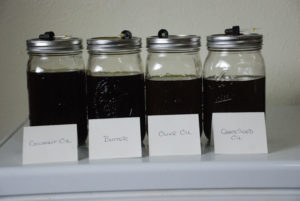
Let’s Talk Solvents – Cannabis Oil: FECO, RSO, Hash Oils and More
Such a huge subject nowadays with tons of different strains, ratios, and especially – opinions. Rick Simpson Oil or as many refer to it RSO made from the cannabis plant in whole was the catalyst in the recent gain in the popularity of Cannabis Oil in the last few decades. Although, the solvent behind it all, after years of scrutiny and examination of medicinal effects, did not gain much popularity at all. It’s well known that Simpson first used light aliphatic naphtha or 99% isopropyl alcohol. Simpson since the time of his book and documentary has made public statements that the use of Food Grade Alcohol such as Everclear would be more suitable. Lately, there’s a huge debate over the use of lab-grade very expensive ethanol over the use of food-grade alcohols, which leads to a lot of arguments online that most people don’t understand. All of these solvents for the ingested oils that are also used topically and in suppositories must be purged or cleaned. Many, including myself, have long-term needs for Cannabis Extract and will do quite a bit to avoid solvents if we can. Long-term use of them, even though sources that are supposed to clean them out, can be dangerous – accidents happen and some producers get downright sloppy. The solvents must be removed very close to, or completely out to pass strict state requirements where it is allowed to make it. One big problem is many sidestep those requirements and do not provide lab analytics. That can be a recipe for a disaster. My own rule is simple – if you didn’t make it yourself or see it made/know the person very well in a close way, get labs!
The reasons for safety insolvent go beyond what can happen to the patient. The exhaust, if not properly ventilated, to those making these types of oils and anyone around it can and is as toxic as the outcome when there’s leftover concentrated solvent in an oil. When it’s a product for sale there’s absolutely no excuse.
Stopping the symptoms of the current issue is what’s at hand for many with illnesses is the number one concern, but lately, it’s had to be ‘will there be more issues if my oil isn’t from a clean source’. Lately, I’ve personally been thinking about the long-term of it all as I use multiple solvent-based products to vape or dab. So I try to get solventless concentrates and avoid the whole issue.
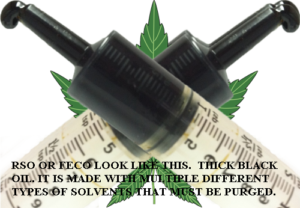
But, when it comes to the oils that we ingest it’s not quite that easy to escape this. Many ask me, what do they look like? Most of us are familiar with RSO and FECO – terms for whole plant Cannabis oil, then there’s RSHO (CBD RSO basically or CBD Cannabis Oil) that’s not much talked about anymore. Most just refer to it as CBD, although there are so many ways to get to CBD! This is one reason I like MCT – Medium Chain Triglyceride Oil.
Health added to health, the only question is, if I use another product and add it to the MCT, it purged and what does it taste like? One thing I look at big-time is tinctures that I can’t see through. If not, why? Well, some things in bottles are actually oils, if that’s the case then I seriously want lab analytics if it’s not a thick oil. Some think that the RSO/FECO Cannabis Oil isn’t clean because it’s black. “Why can’t I see through it” is the question asked so often.
The answer to that question is not that the black oil isn’t clean or as good, it’s extremely concentrated. Only those lab analytics will tell you how good the oils are. It all comes down to who made it and with what type of material as that matters so much more than where it was made. All quite confusing for the new to Cannabis individual, boy do I know!
Shatter, Wax, Dabs – BHO (Butane Hash Oil)
A well-known online magazine is known as Erowid, basically an online psychoactive library, put out an article in 1999 titled “Hash Honey Oil Technique”. Many debates this was the first online information on making butane hash oil which is quite popular among those that dab. Although knowing that it’s made in a somewhat dangerous way, I can tell if the solvent – butane, has been cleaned. Still, trace elements are there which have me leaning towards CO2, which although is yet another solvent yields a much cleaner-looking extract that has been deemed to be safer for use by many, others will quickly disagree. Personally, I like both as they work awesome for seizure/anxiety control and pain. Both are fast-acting but the big difference? I don’t trust BHO as something to eat but I will dab it. C02 on the other hand looks clean but many will argue that metal shavings can be detected depending on the type of equipment used. “Open Blasting” or the making of Honey/BHO as described back in 1999 still exist today and although enjoyed by myself and others – making it can be downright dangerous due to the highly flammable butane, and using it if not clean also not healthy. A simple flame to the product can tell a user if there’s residual butane that’s traceable enough to see. Regulations do not allow for much more than a trace of any solvent – but none is the goal or necessity I should state. This is what BHO’s and other concentrate’s look like. I’d rather have the shatter as it’s clean. But when it comes to the clearest-looking oils, CO2 takes the cake although I don’t prefer it!
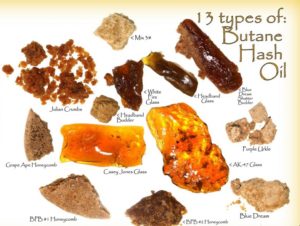
CO2 oil will come out very see-through but lacks a full spectrum of Cannabinoids:

I prefer pressed dabs, the absolute cleanest! The Cannabis Bud is put right between two hot plates and the clean concentrate comes out to vaporize or use as you please. Yum – this is the way to do it!
There’s a do-it-yourself way to press dabs without the expensive machine for those that want to vaporize something clean and have their own buds!


Below is actual shatter – a very clean batch from the look of it. This is made with Butane as a Solvent. That’s another highly controversial subject – whether there are long-term effects of vaping or taking dabs of these products if they are not properly purged of ALL solvent – which seems impossible. Most that know me are aware that Mike likes Shatter! Getting it very clean is another story so I look for those lab analytics to tell me what’s clean if it’s coming from an outside source.
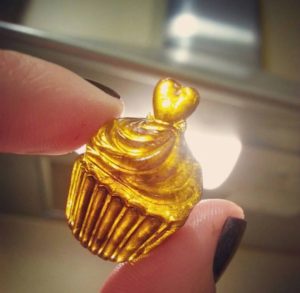
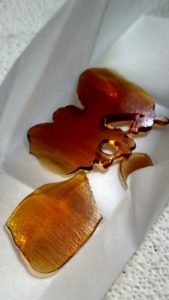
CO2 – From Edibles, Oils, Vape Cartridges and More.
I love vape pens and so do millions of others. Dabbing CO2 is also pleasurable as it’s generally a very clean product that flows nicely and leaves no residual, most of the time anyway. Now here’s where the alchemists of the world chime in and will debate in a huge way that carbon dioxide, liquid gas can only extract the non-polar chemicals of a plant. But, alcohol itself as a solvent is made due to plant fermentation and is a by-product of plants themselves. CO2 experts argue back regarding the cleanliness of the final product. People are confused as some like the way CO2 looks – you can see right through it. Others argue you shouldn’t be able to.
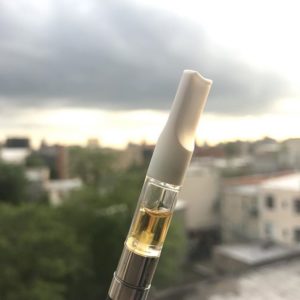
Experts will state that alcohol is a solvent that maintains the original chemical ratios contained in the plant. This is due to alcohol extracting both water-soluble and oil-soluble components. And for this reason, CO2 products aren’t that great for digestion. All of this debate tends to drive me crazy! I like both but tend to favor the clear clean extraction of the CO2 without a doubt for vaping in cartridges. For ingestion the jury is still out as I’ve only ingested limited amounts of CO2 – I can say it has an effect that I can feel right away instantly unlike Cannabis Oil (RSO/FECO) but doesn’t seem to last as long when ingested – especially for pain and epilepsy. I don’t prefer it that’s for sure! Along with some MCT coconut oil heavily infused with Cannabis, it made an okay combo. It tastes good that’s for sure, but personally, I’d rather save it for one of those vape pen cartridges. I can definitely feel the THC in the stuff, now that kills cancer cells which I definitely desire right now. Why debate when we can just love it all?
There are quite a few different types of CO2 Vape Oils out there. Just about all the strains and types are broken down by the different Sativa’s, Indica’s, and CBD’s.
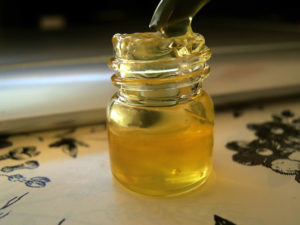
Preference for the CO2 oil comes from the outward appearance, to begin with. Very clean looking but does it have the full profile? I don’t believe it does, generally, CO2 is good for snagging specific cannabinoids from my experience. Once again, there are various types of CO2 extraction devices. I’ve seen them for $5,000.00 and I’ve seen $250,000.00 setups. So, it’s not the way it’s extracted all the time, it’s how and by who. Make sure whoever you’re getting oil from is a trusted entity beyond promises. I look for those analytical labs if I’m buying something – that’s for sure! If they’re not published or offered and given quickly upon request there’s a good reason to be suspect
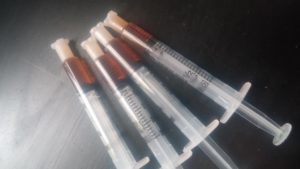
Regardless of the type of Cannabis concentrate one decides to use it’s very important to make sure that it’s reliable in regards to purging all solvents or ridding the product of all but the cannabis concentrated. Some say it’s impossible to do but I’ve seen clean lab tests from tons of entities. If someone suspects solvent in their product, depending on the product, my personal opinion is you may not want to use it. If it’s grain alcohol made RSO or FECO some think it’s okay to have residual to the extent that it’s ok to ingest some alcohol. Many disagree.
Others give strong advice that making the RSO or FECO products with anything other than 95%+ pure lab-grade alcohol isn’t too smart as there’s a lot of water in those food-grade alcohols. Many times it’s not fully purged and that means concentrated alcohols, not good! There’s always a bunch of opinions to wade through on the internet. A personal choice should be respected, especially if it’s someone’s only option. I personally believe the more informed we all are the better – and that opinions, even mine, are exactly that. The thoughts and or beliefs of one individual.
Mike Robinson, Medicinal Cannabis Patient
Sign up to receive informative and exciting email updates from Mike's Medicines!
You can sign up for our mail list here:
Didn't find what you are looking for?
Find exactly what you want to when you want it.
Browse through our archives by date, category or by entering a topic in the provided search field.
Archives
Categories
More to come as we have time to add them – there’s 100’s of additional publications!


